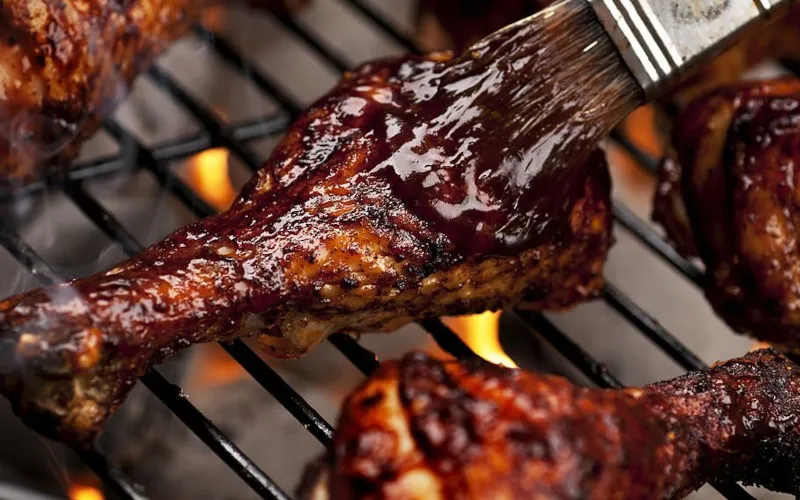Wagyu beef is not your run-of-the-mill meat. This premium and tasty steak is known for its delicate flavor and remarkably soft texture. In the world of steak, Wagyu beef is considered in high regard because of its beautiful marbling that cooks into tender, juicy, melty steak with deep beef flavor.
The marbling of grass-fed wagyu beef makes it arguably the juiciest and most tender steak in the world.
If you have even had the taste of a piece of wagyu beef, the chances are that you want to know the right way to cook it. Thankfully, it doesn’t take years of culinary school or hours of food network to master the art of cooking Wagyu beef following the traditional Japanese-style recipe.
In this post, you will learn more about wagyu beef and how to cook it to achieve gratifying results.
What is Wagyu?
Literally, wagyu translates to “Japanese cow”. As such, Wagyu refers to the four cattle breeds native to Japan, where “Wa” means Japanese, and “gyu” means cow.
If you are a starter, it is worth noting that Wagyu is not an umbrella term for any Japanese cow.
Historically, Wagyu referred to draft animals that were used in agriculture, mainly because of their physical endurance. The selection favored animals with intramuscular fat cells, so it should be no surprise that this Wagyu is used to refer to a genetically unique breed. Unlike other cows, Wagyu is a horned breed that either comes in black or red color.
There are four breeds considered Wagyu:
- Japanese Black
- Japanese Brown (referred to as Red wagyu in the United States)
- Japanese Shorthorn
- Japanese Polled
The Japanese Black is the predominant Wagyu in the continental United States and even in Japan. Additional note – the Shorthorn and Polled varieties are only bred in Japan.
Japanese Black
By far, Japanese Black is the most popular Wagyu in Japan and other parts of the world. The breed is primarily raised for beef consumption. Steaks from Japanese Black, including the famed Matsuzakagyu, Tajimagyu, and Miyazakigyu, are known for their marbling and soft, tender texture.
Japanese Brown
Popularly known as “Akaushi”, the breed produces relatively leaner meat with lower fat content compared to the steak cuts from the Japanese Black. Despite not being as popular as their Black cousins, the Japanese Brown breed has continuously attracted more attention due to its low-fat characteristic.
Japanese Shorthorn
Only bred in Japan, mainly in the Tohoku region, the Japanese Shorthorn is known to produce one of the leaner yet flavorful steaks.
Japanese Polled
The Japanese Polled resulted from crossbreeding the Japanese Black with Aberdeen Angus. Despite being a crossbreed, the breed is known for producing lean wagyu beef with an impressively distinctive and robust beef flavor.
Wagyu cattle were established as indigenous until 1957, and now the breeds are bred in almost every continent, with Japan, the USA, and Australia being the most prolific and popular producers.
Today, the breed is highly sought after due to its consistent high quality and reputation. In fact, the lineage of the wagyu beef is thoroughly tracked to protect its authenticity. For instance, all Japanese Wagyu beef is assigned an individual unique ID, allowing for easy tracking.
The unique taste and tenderness of highly marbled Wagyu beef make for an unrivaled eating experience. That’s why Wagyu beef is finding its way into the repertoires of fine restaurants across the US. Even better, Wagyu beef has a high ratio of mono-unsaturated to saturated fat ratio, making for a healthier option. It is also rich in a type of fatty acid called conjugated linoleic acid (CLA).
Today, the Wagyu breed plays a vital role in increasing the quality of red meat produced in the US and other parts of the world.
As for the beef itself, Wagyu beef is the most sought-after bee thanks to its marbled texture, high-fat content. When cooked properly, it is a moist, tender, and mouth-watering steak that literally melts in your mouth.
Which Steak Should You Buy?
Choosing the right steak for the exact flavor of Japanese wagyu beef can be difficult. While the Japanese Wagyu steaks are highly regarded because of their high-quality, high-fat content and marbelizations, the American Wagyu steaks are also high-quality despite the fact that they eat like standard steaks.
If you want to have a taste of both worlds and even know the subtle differences between the Japanese Wagyu steak and American Wagyu steak, here are some of the best steaks from which you can pick your favorite:
Kobe Wagyu A5 Ribeye
One of the rarest types of Wagyu, the Kobe Wagyu A5 Ribeye is the one and only real-deal Kobe beef. If you are lucky, you may get one in the lavish restaurants.
Chateau Uenae A5 Hokkaido Snow Beef Ribeye
This beef is only produced by only one rancher in Japan. As such, you can barely get this steak without a thorough search because only one to two cattle qualify for the highest Snow beef designation. When cooked properly, you get moist, tender, and succulent steak.
American Tajima Wagyu Ribeye
This is a steak from the American Tajima Wagyu cattle. It has great marbling that makes it compare relatively well with the Japanese Wagyu.
American Tajima Wagyu Strip Steak
This is just a steak taken for the same cattle as the American Tajima Wagyu ribeye.
American Prime Ribeye
We all know that aging improves the quality and flavor of steaks. The American prime ribeye sets itself apart with aging.
While you won’t go wrong with any of these steaks, the Japanese A5 is always preferred. It has the most unique experience in terms of cooking and flavors. However, this experience and incredible flavors come with taste.
While it can be hard to get the premium Japanese wagyu steaks, the struggle is worth it.
How to Serve Wagyu Steak?
Wagyu beef is very forgiving and provides juicy flavors every time as long as it is cooked properly. Once cooked, the succulent steak can be served with flavorsome garnishes that cut through the meat’s rich taste.
Of significance, wagyu beef should be served in small pieces as its richness can be overwhelming when consumed in large quantities.
Unlike other common steaks, if you want to get the best taste, wagyu beef should be seasoned only a little and cooked on low to moderate heat. Experts recommended salt and pepper only.
When cooked properly, Japanese A5 Wagyu is sure to make a bold statement, and simple compliments should provide balance. In a nutshell, for the most authentic and enjoyable experience, Wagyu beef should never be complicated, no matter your cooking technique. That way, you will get a taste of the bold flavors.
For an enjoyable dinner, Wagyu steak can be served with medium- to full-bodied wine, light, flavourful appetizers, favorite desserts, and a side dish that goes well with the robust flavors of this premium steak.
How to Cook Wagyu Beef: Step-by-Step Cooking Process
After investing in high-quality Wagyu beef, you want to cook it so that it tastes the best. In one line: Wagyu beef is seasoned with salt and pepper and best cooked at medium-rare temperature.
To enjoy the luxurious texture and sweet, buttery flavor of Wagyu beef, here is how to cook your expensive cut:
- Bring your Wagyu steak to ideal cooking temperature
After choosing the right cut for your recipe, the first thing you need to do is to rest it at room temperature before cooking.
As such, rest your Wagyu steak at room temperature for about 30 minutes to one hour before cooking. Resting your steak at room temperature brings it to an ideal temperature for it to cook more evenly and faster.
. - Seasoning the Wagyu beef
Once the steak is at room temperature, it is time to season it.
Generously sprinkle your wagyu steak with salt and coarsely ground pepper. Salting the steak tenderizes it by pulling moisture out of the steak, dissolving into it, then diffusing back into the stake.
As you would expect, the results are impressive when the steak is salted for longer. However, if you crave a fantastic, salt-forward sear than tenderness, salt immediately before cooking.
Note: Wagyu meat doesn’t need to be marinated. In fact, marinating Wagyu beef can toughen it and hide the rich flavor it is known for.
. - Preheating your pan, grill plate, or skille
While there are many techniques for cooking your wagyu steak, grilling and pan-searing are the most common and preferred methods. In this post, we will be biased, so let’s go by searing.
That said, preheat your cast-iron skillet over high heat. It should be hot enough that when you flick water at it, it boils off immediately.
. - Searing your Wagyu beef
Holding one end of your Wagyu steak with one hand and using chopsticks on the other end, lift your steak and carefully lower it into the hot skillet. This way of lifting keeps you from stretching the steak, which could toughen it.
Although not absolutely necessary for the wagyu beef with high-fat content, you can rub a fat cap around the steak on the entire inside of the skillet to keep your beef from sticking.
Sear the steak for about one minute to an additional 30 seconds in the skillet over medium-high heat until the bottom side is golden brown. If you had not seasoned both sides of the steak, utilize this one minute to salt the unseasoned side (which should be the upper). It is worth noting that the ideal time you need to cook your steak will depend on the steak’s thickness.
Next, using a wooden spatula and chopsticks, flip the steak and sear the other side for another one minute. The two sides of your steak should turn brown, but the inside will be pink.
If you have a thermometer, you can use it to test for doneness as cooking times can deliver extremely varied results. The internal temperature of a well-cooked wagyu steak should be 120 to 125 degrees Fahrenheit for rare and 130 to 135 degrees Fahreneheit for medium-rare.
. - Rest your Wagyu beef
Once cooked, wrap your Wagyu in foil and let it rest for about 5-10 minutes. Resting your steak or roasts allows the juices to redistribute evenly, ensuring a tender, juicy eating experience. For large stakes, the resting duration can help finish off the cooking process as the steak continues to cook inside the foil.
Serving the Wagyu Beef
If you are a seasoned chef, you already know the importance of resting any meat after cooking. Resting allows the meat fibers to relax, widen, and reabsorb those delicious juices, making for a premium flavor.
After the resting period, use a spoon to scoop up any juices left in the skillet and pour them over the Wagyu steak to give it extra flavor. Next, sprinkle a little extra salt and pepper over your Wagyu and slice it into strips.
While you can enjoy Wagyu beef as simple strips, you can choose your favorites to go with the beef. For instance, flavorful garnishes should enhance the flavors, and a bowl of white rice will make an excellent companion for the beef.
The richness of Wagyu steak also pairs remarkably well with a smooth glass of bourbon.
In a nutshell, there are a lot of ways to enjoy well-cooked Wagyu beef. The limitation is between your ears.
Note: To keep the Wagyu beef’s delicate flavors and texture, don’t cook the meat past medium-rare. Let no one tell you otherwise.
Conclusion
Wagyu beef is arguably the best premium steak in the world. Although it is one of the expensive Japanese beef you can buy, its high-fat content and marbelization are worth the considerably premium price tag. Interestingly, cooking Wagyu is surprisingly quick, easy, and simple.
For an enjoyable Wagyu beef, make sure you pick the right cut. Moreover, this is because the ultimate results will immensely depend on the steak you prepare. When cooking, also make sure to go light on seasoning. Unlike other stakes, Wagyu delivers a legendary experience without marinades, sauces, and seasonings, so just avoid anything that might overwhelm its flavors.





